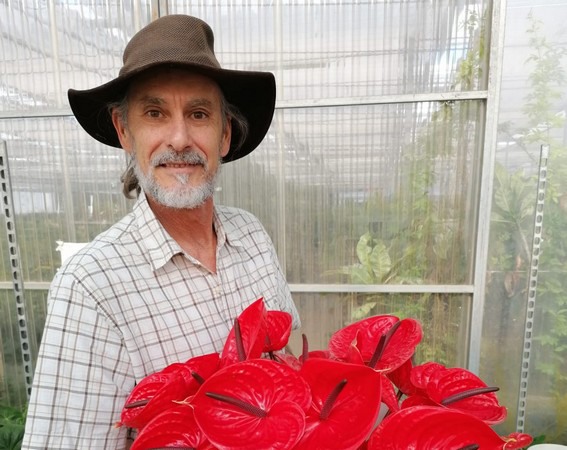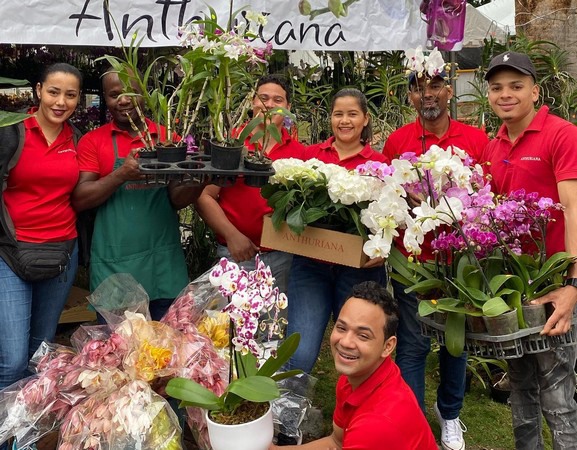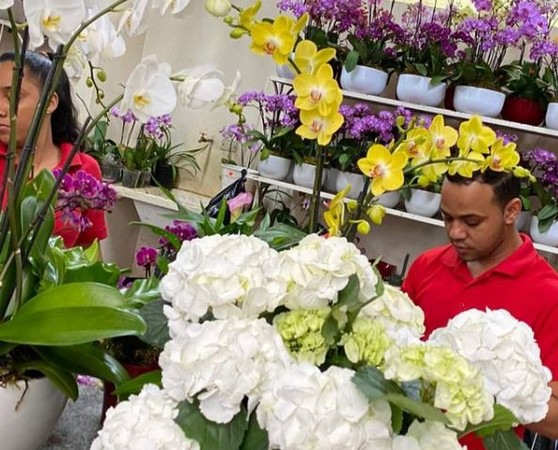Patrick Vez is one of Anthura’s first growers. He lives in Portugal with his wife and 6 children and owns a nursery there of 5,000m² filled with Anthurium cut flowers for the Portuguese market. More than 6,000 kilometers away, in the Dominican Republic, his other company is situated. With a total surface of 8 hectares of greenhouses and shade houses, Anthuriana Dominicana produces millions of plants and flowers every year.

"At the start we exported all our cut flowers to the United States. At a certain moment I started to grow Poinsettia’s; in Puerto Rico they sold them on every corner, but nowhere in the Dominican Republic. Anthuriana Dominicana started to sell them locally, even though there are only 100,000 consumers that buy flowers and plants. This is a very small quantity compared to the 11 million inhabitants. However, the elite is very rich. They like to show what they have and spend a lot of money on flowers and plants, among other things."
"I now sell all the plants in the Dominican Republic and a little bit in Haiti. We kept on investing and expanding and now we have about 700 products, among which Phalaenopsis pot plants, Anthurium pot plants and Bromeliaceae: our top 3 products. But we have much more. We also have succulents, cactus, palms, vandas, dendrobiums, calatheas, ficus, spatifillums, ferns, poinsettias, annuals etc. We have 200 employees, 6 farms at 6 different locations, sometimes a four hour drive from one to another. The structure is mainly that each greenhouse has its own task, for example for Phalaenopsis we grow one phase in one specific greenhouse and the next phase is on a farm more than 100 kilometers away."

According to Patrick, the main difference is that in the Dominican Republic, they do not have suppliers. Garden centers cannot find good growers and suppliers. "And that is our strength: our success is that we supply everything. If somebody opens a new supermarket, there is not much available, because we grow everything. When they buy from us, they can choose. A lot of people buy cut flowers and pot plants because of a certain situation, such as a wedding, party or funeral. For potted plants it is starting to change and people are starting to buy them as well, including in lower classes."
"Florists make nothing in advance. They start making an arrangement or bouquet after an assignment that is payed. If I were an investor, I would make more shops. But I don’t feel like it, because I like to work with plants and not spend my time with paperwork. The opportunities in the Dominican Republic are definitely there."

"Plants and flowers are mostly for the rich here. They are a status symbol. Twenty-five years ago, rich people all lived in houses with huge gardens, so there were a lot of outdoor plants back then and their houses were always filled with flower bouquets. Nowadays nearly all the people live in modern apartments. Modern, so the trend here is black, white and glass and not so much colors. Therefore there is no necessity to fill the apartments with colored plants. However, if they buy plants, they always order large quantities, like the hotels and restaurants. In this high class market, succulents and green plants are also popular. Dominican people are surprisingly aware of what happens in the world."
Read the complete article at www.anthura.nl.

 Anthura
Anthura